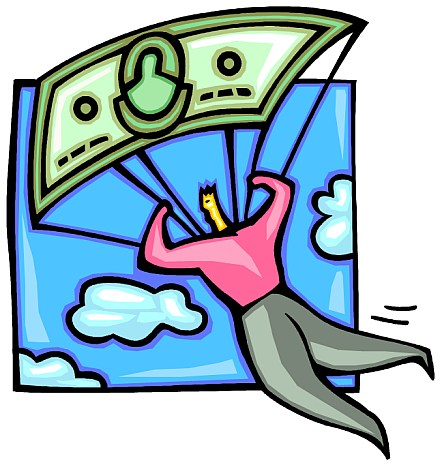
[Editor’s note: This post is our continued dissemination of content from this week’s SearchEngineStrategies San Jose search marketing conference, where AIMCLEAR had 3 correspondents providing our readers notes and articles. The following is from our friend and blogger-associate, Charlene Jaszewski:]
Search is all about getting users to your site, but what happens when they get there? Landing Page Optimization is all about making sure users know exactly what to do when they land on your site. These notes are from the SES San Jose “Landing Page Utopia: Expert Round Table panel.”
The moderator was Ron Belanger, Vice President of Agency Development, Yahoo! Search Marketing. Speakers: Scott Brinker, President & Chief Technology Officer, ion interactive, Frans Keylard, Director of Optimization, Widemile, Alissa Ruehl, Manager of Paid Search Services, Apogee Search & Jonathan Mendez, Founder & CEO, RAMP Digital
Let’s talk terms first:
Landing Page: where users end up after they click search engine results, or type in a direct age
Conversion: when a viewer of the site fulfills the call to action on your site. It is most commonly when a user makes a purchase, but it could also be an action, such as filling out a form, submitting their e-mail, or downloading a PDF.
Engagement, Not Conversion: Scott Brinker of Ion Interactive
- Think in terms of ENGAGEMENT, not necessarily conversion. Just because someone lands on your site doesn’t mean they will convert. In fact, it’s more likely they WON’T convert.
- Have more than one landing page. People will find your site through more than one channel, their landing page should reflect that difference in context.
- Make copious use of post-click segmentation. Let users do self-segmentation (ooh that sounds weird). Let them decide what group they are in. When they sort themselves, the page content following the segmentation can be more customized to them! Forms can get shorter and friendlier, for example. Case study: when Howard Johnson’s offered a choice on their landing page for business or leisure traveler, they got a 73.1% segmentation rate.
- Use widgets and social media – landing page respondents are a natural affinity group. Get people to connect with each other.
Ten Landing Page Proverbs: Alissa Ruehl of Apogee Search
- DON’T LOOK A GIFT HORSE IN THE MOUTH: Leads are a gift. Don’t ask for mailing address unless you need it. Avoid asking someone to confirm email address for a form, consider emailing the doc. Don’t ask things in forms that you wouldn’t ask in person in first meeting (would you ask someone at first meeting their income?)
- ARE YOU GOING OUT DRESSED LIKE THAT?: Forms should be clean and functional. Single column forms easier to use if you use two columns, use sensible tabbing. Make fields the right size for the content. Do not have a button to clear or reset the form.
- BREVITY IS THE SOUL OF WIT: Have a good title, make it short and sweet. Use search keywords when possible. Be careful with dynamic keyword insertion. Avoid all caps if possible.
- TIDE AND TIME WAITS FOR NO MAN: Visitors won’t wait for a slow site to load – in fact Google will penalize you if you have a slow loading site. However, if it’s imperative for it to be slow, have a good loading message.
- A PICTURE IS WORTH 1000 WORDS: People get bored with text – break the monotony with some pictures. BUT use real pictures, not stock (they perform better). Check the file size that they load fast.
- YOU’LL GET BY WITH A LITTLE HELP FROM YOUR FRIENDS: Get an outside opinion – ask friends, consultants (outside your marketing department), someone outside your industry, your local teenager.
- PAY ATTENTION TO OTHER PAGES TOO: Some visitor will stray – you need to optimize the whole site – and make sure you have a good about us page!
- YOUR THANK YOU PAGE IS IMPORTANT TOO: If you have customer downloads (say a white paper), say thanks after it’s complete!
- TRY TO PLEASE ALL AND YOU’LL PLEASE NONE: Speak to your target audience get ot know customer segment audience and create personas to speak to target by search term.
- IT’S WHAT ‘S INSIDE THAT COUNTS: Make sure your product has real competitive advantages, and that you have good juicy content.
The World’s Greatest Landing Page; Jonathan Mendez of Ramp Digital
Jonathan Mendez of Ramp Digital spoke last. Jonathan used Google as an example of the world’s greatest landing page, to show the components of an effective landing page.
- Give people control. (the Google query field). Let the user control the medium. People know their intent better than you do. Self-segmentation is the most powerful technology. Allow people to maintain control over presentation and delivery of content.
- Reduce choices. The search battle was won and lost on Google. You can only do one thing on the Google site: search. You can also search on the Yahoo site, but look at all the othe distracting stuff on the page! Remember paralysis by analysis!
- Don’t just rely on HTML. Use advanced scripting to do what you need: Javascript APIs, AJAX, semantic markup.
- Target to content. Keywords become rules. This is what the web is all about! Content targeting!
- Design for goal, not the person. Google’s design varies ever so slightly per country.
- The experience you create has HUGE brand value. Google is the number one brand in the world and has never spent a cent on advertising.
- Always be testing! Google has almost 10,000 people constantly testing every day.








